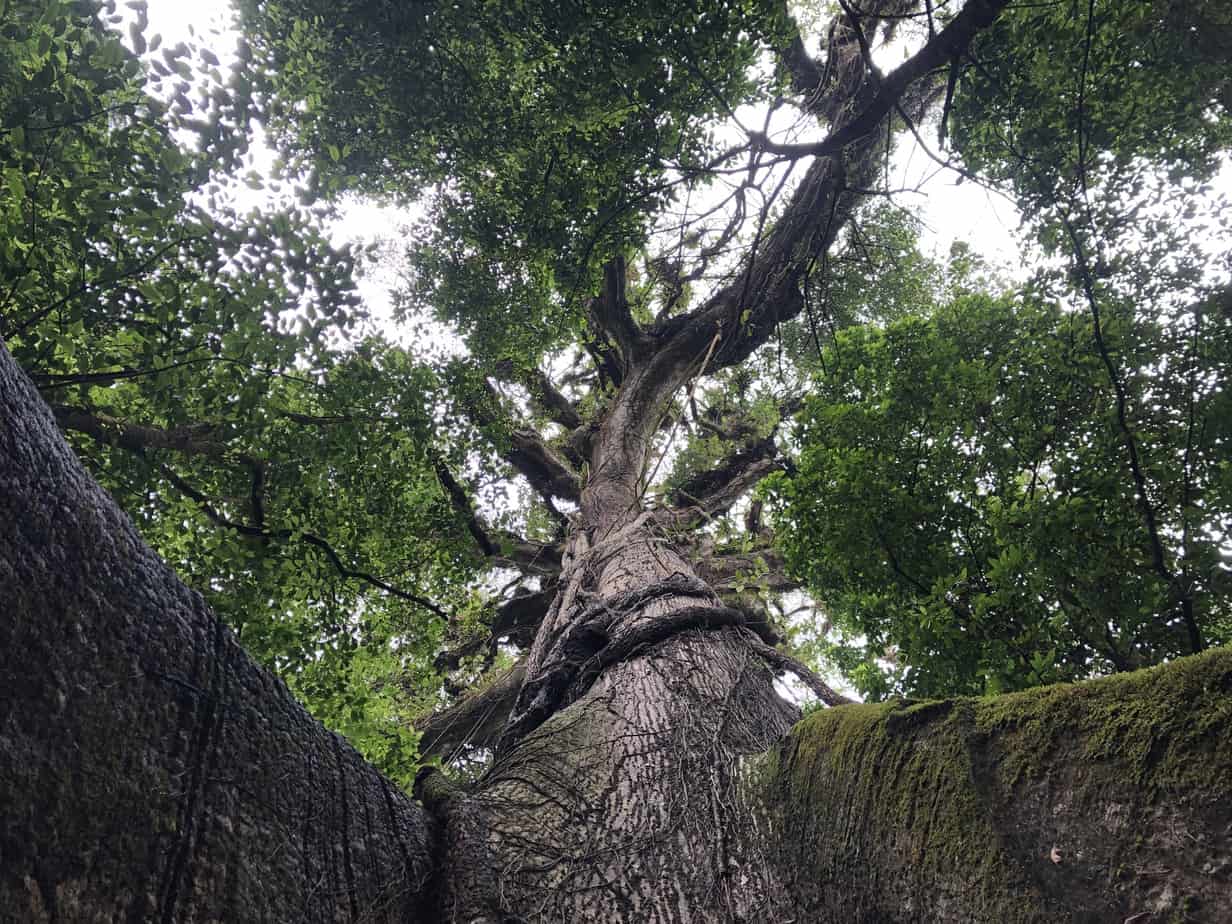SAN GERARDO DE RIVAS, San José – Sierra Allen is 30-feet up in a tree, hacking at a branch with a handsaw. She’s secured up there with a rope system she and a fellow climber invented. Her French braid dangles down her back, looking a bit like a rope itself.
Finally her knife severs its target, and a branch sails from the tree, drifting for a short time before it becomes entangled in another tree.
Fail.
Laughter erupts at the base, where a group of environmentalists, biologists and visitors to Cloudbridge Nature Reserve are gathered for a tree-climbing spectacle. Allen – and her knack for climbing – plays a key role in this project to identify about 700 unknown trees in the park.
Since Cloudbridge’s founding in 2002, the owners have desired to restore the natural environment on its 700 acres flanking Chirripó National Park. The more information the Cloudbridge team can gather about the mix of trees in the area, Cloudbridge director Tom Gode says, the better they can replicate the environment, and rebuild a habitat for wildlife that disappeared from here years ago.
Before the land belonged to Cloudbridge, it spent decades in the hands of cattle farmers who clear cut the forest so cows could graze, leaving just a few old-growth trees here and there. Reserve workers and volunteers have planted thousands of native trees and set up cameras to track the return of local fauna. Lately, more wild cats have been appearing in camera footage, and three months ago, environmentalists spotted the first sloth in Cloudbridge in more than a decade.
To watch as Allen scaled some very tall trees, the interested group ascended a steep trail that winds far above the public portion of the reserve. They veered off the path onto a mountainside of dense cloud forest. In the undergrowth, mosquitoes attacked their foreheads. Chiggers slipped beneath their clothing.
Nobody said identifying trees was easy.
The process began a few months before Allen arrived. A biologist named Marlena Scheller flew over from Belgium in December. Scheller grabbed low-hanging leaves and used a slingshot and other tools to attempt to ground greenery out of reach. She then took measurements and photographs and recorded the characteristics of the leaves, writing down what the veins looked like and if they had sap inside. If the leaves were hairy, she made a note.
Though Scheller hoped to identify many of the trees herself, often it was not possible. Many of the leaves she collected from different trees looked strikingly similar, requiring that they be sent away for identification. But the bigger problem was that hundreds of trees didn’t offer a reachable branch.
“We would always joke that we needed monkeys,” Gode said. “Now we’ve got our human monkeys.”
Allen and her family came to Cloudbridge for the first time last year and quickly developed an infatuation with the private reserve, which contains scenic waterfalls and towering strangler fig trees. Allen and her father are climbing enthusiasts originally from the Yukon Territory in Canada, but they live much of the year in Providencia, a mountain town in central Costa Rica. They are specialists in rock and strangler fig climbing, and the kind of people who use their spare time to build wilderness ropes courses.
Allen’s father couldn’t make the first round of identification, so she brought another climbing buddy to Cloudbridge last week, volunteering to help gather samples of foliage from around a dozen trees per day. In the mornings, the able-bodied pair of climbers feasted on spaghetti and bounded up the mountain with their gear: carabiners, rope, webbing and slings.
Allen – who is 22 – strapped into her gear and began to scramble up the tree on a dual-loop system. She lassoed a rope tight around the trunk, clipped herself to it, then ascended a stairway of webbing. Next, she lassoed a second rope even higher up and ascended the webbing once more, clipping in even higher.
Down below, the group discussed whether this natural climber – who had grown up with a tree house that could only be accessed via cable car – was afraid of anything. Allen overheard, and joked that she was afraid of heights.
Her buddy laughed. “She’s afraid of bats,” he said.
At 30 feet, there had been just a couple of accessible branches. Allen removed every one of those low-level options, and each one became stuck in the tops of other trees on the way down. Now she searched for a way to get up to the tree’s next level – and more branches. Surrounded by forest canopy, Allen climbed out of sight.
As she struggled, her buddy, who asked that his name be withheld so he could stay “off the grid,” told stories of how in summer time, the pair travels to the Yukon to gather morel mushrooms. Once they’ve sold enough mushrooms to support themselves for the remainder of the year, they return to Costa Rica or travel, always in search of the next tree or rock. As he spoke, a thick branch came crashing down through the canopy.
The biologist Schiller hustled to retrieve it, nearly losing her footing on the moist, slanted terrain. She studied the leaf for a sign of something familiar and shook her head. “There are so many I can’t name,” she said. This sample and many others would have to be sent to the herbarium in San José for a more formal analysis.
Up in the canopy, Allen was attempting to grab more branches from other nearby, trees, which the team realized could make the process much faster. But this time, in yet another fail, the closest trees had already been pruned for samples, and the rest were out of reach.
Undeterred, Allen began lowering herself down, glancing around for which enormous tree might be next.

